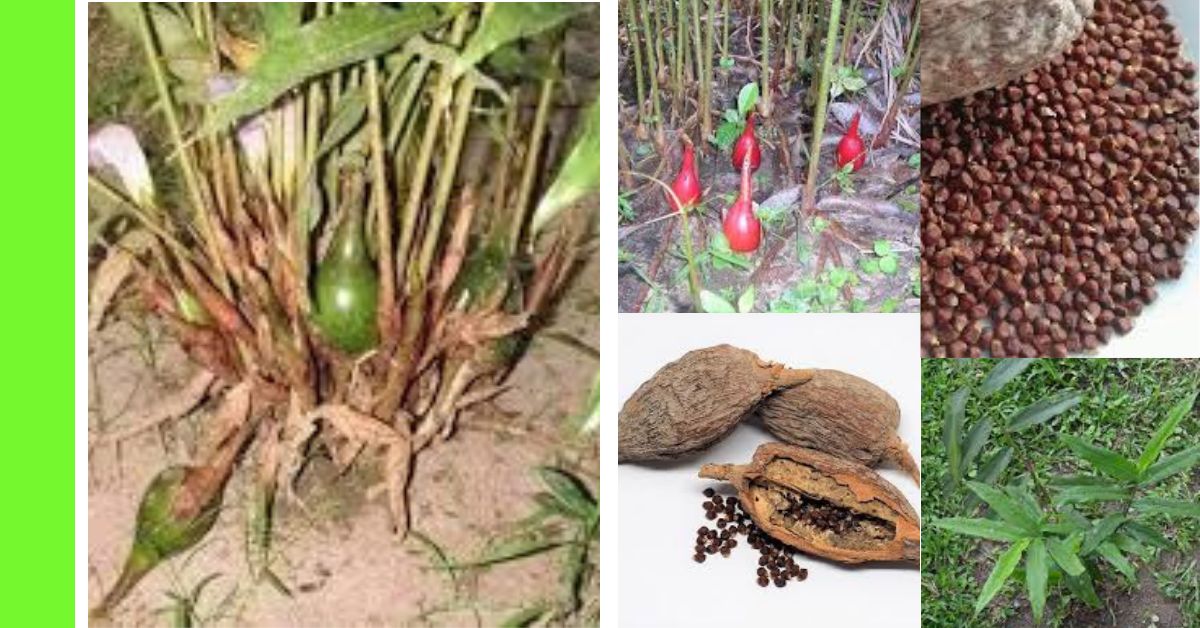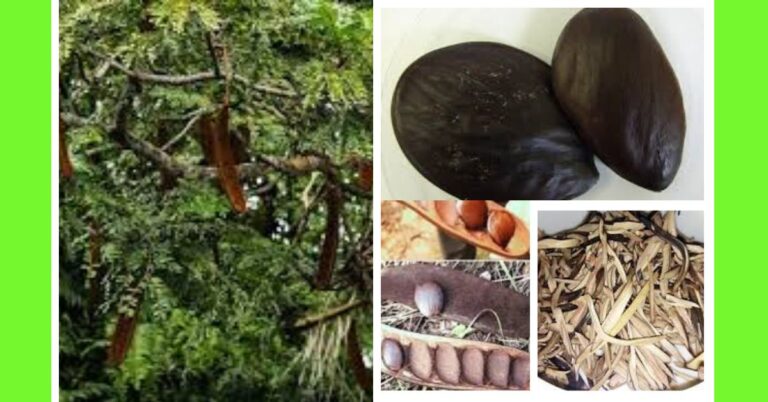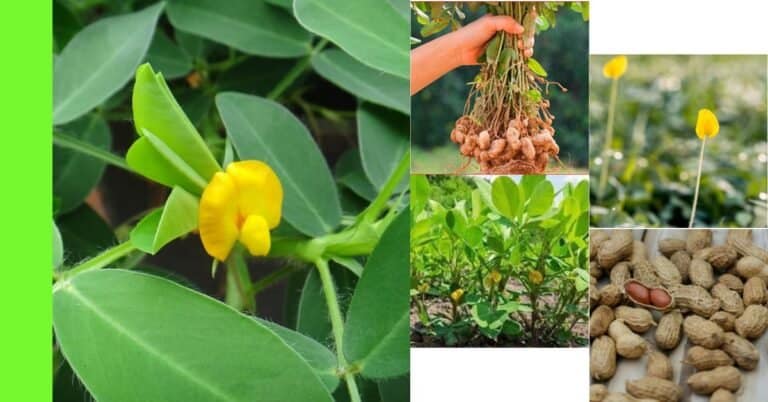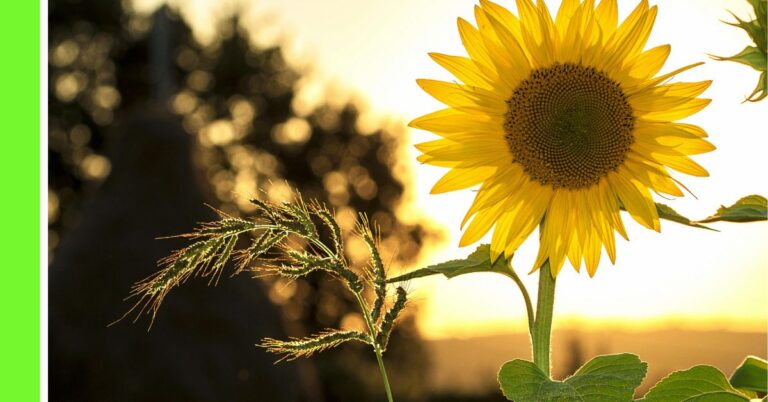How to Plant Alligator Pepper in Nigeria: A Step-by-Step Guide

Alligator pepper (Aframomum melegueta), also known as grains of paradise, is a tropical plant widely grown in West Africa.
Known for its seeds with a pungent, peppery flavour, it is highly valued for culinary, medicinal, and cultural uses.
If you’re interested in cultivating this remarkable plant in Nigeria, this guide will walk you through everything you need to know, from planting to harvest.
Description of the Alligator Pepper Plant
Alligator pepper is a herbaceous perennial plant from the ginger family (Zingiberaceae).
It thrives in tropical climates with warm temperatures and high humidity, making Nigeria an ideal location for its cultivation.
The plant typically grows to about 1–2 meters tall and produces lanceolate leaves, similar to banana plants but smaller.
It thrives under the canopy of larger trees and is usually grown in forest-like conditions.
The plant’s most notable feature is its underground rhizomes, which give rise to flowering stems that produce pods containing the seeds.
The seeds are small, reddish-brown, and encased in golden pods.
They are the prized part of the plant, often harvested for their use as spices or in traditional medicine.
Planting Season for Alligator Pepper
Alligator pepper is best planted during the rainy season, requiring consistent moisture to establish roots and grow well.
In Nigeria, the optimal time to plant is between March and June, coinciding with the start of the rainy season.
This period ensures that the seeds or rhizomes get adequate water for germination and growth.
Planting Alligator Pepper
Follow these steps to grow alligator pepper in Nigeria successfully:
Step 1: Choose a Location
Alligator pepper thrives in shaded, humid environments. Select a location with the following features:
- Shaded Area: The plant grows best under partial shade, such as beneath taller trees.
- Well-Drained Soil: Loamy soil rich in organic matter is ideal. Avoid waterlogged areas.
- Warm and Humid Climate: Ensure the area has temperatures between 24°C and 30°C with high humidity.
Step 2: Land Clearing and Preparation
- Clear the selected land of weeds, shrubs, and debris.
- Till the soil lightly to improve aeration and ensure proper drainage.
- Add organic matter such as compost or decomposed manure to enrich the soil.
Step 3: Means of Propagation
Alligator pepper can be propagated through:
- Seeds: Harvested from mature pods.
- Rhizomes: Underground stems that sprout new plants.
Seeds are the more common propagation method due to their availability and ease of planting. Rhizome propagation, while faster, requires mature plants as a source.
Step 4: How to Plant Alligator Pepper from Seed
- Seed Preparation:
- Extract seeds from ripe pods.
- Dry the seeds under shade for a few days to reduce moisture content.
- Planting Process:
- Dig holes 2–3 cm deep, spaced about 1 meter apart.
- Place one seed in each hole and cover it with a thin layer of soil.
- Spacing: Maintain 1–1.5 meters between rows to give plants ample room to grow.
Step 5: Watering
- Water the seeds immediately after planting.
- Continue watering regularly, especially during the dry season, to keep the soil consistently moist. Avoid overwatering, which can cause root rot.
Step 6: Apply Manure
- Use organic manure such as compost or well-rotted poultry droppings to enrich the soil.
- Apply manure every 2–3 months during the growing period to promote healthy growth.
Maturity and Harvest
Alligator pepper plants take about 8–12 months to mature, depending on environmental conditions. Signs of maturity include:
- Development of bright golden pods.
- Pods split open to reveal seeds when fully ripe.
Harvesting Tips:
- Harvest the pods by cutting the stalks carefully to avoid damaging the plant.
- Dry the harvested pods under shade before extracting the seeds.
Pest and Diseases
While alligator pepper is relatively resilient, it is susceptible to certain pests and diseases, including:
- Pests:
- Grasshoppers and caterpillars feed on the leaves.
- Nematodes can attack the roots.
- Diseases:
- Fungal infections, such as leaf spots and root rot, are caused by poor drainage.
Pest and Disease Control
To protect your alligator pepper plants:
- Cultural Practices:
- Practice crop rotation to prevent nematode buildup.
- Ensure proper drainage to avoid fungal infections.
- Natural Remedies:
- Use neem oil or garlic spray to deter pests.
- Chemical Control:
- Apply appropriate pesticides or fungicides as recommended by agricultural experts.
- Regular Monitoring:
- Inspect plants weekly for signs of pests or diseases, and take immediate action if detected.
How Many Alligator Pepper Plants Can I Grow on a 50ft by 100ft Plot of Land?
A plot of 50ft by 100ft (approximately 465 square meters) can accommodate about 200–250 alligator pepper plants, depending on spacing.
What Quantity of Alligator Pepper Can I Harvest?
The yield of alligator pepper depends on the number of plants and farming practices. On average:
- A single plant can produce 10–15 pods annually.
- With 200 plants, you can harvest approximately 2,000–3,000 pods per year.
- The seeds from these pods typically weigh about 15–20 kg, depending on pod size.
By following this guide, you can successfully grow and harvest alligator peppers in Nigeria.
With proper care and management, this rewarding crop can provide significant economic and cultural value.
I hope this article was helpful.
Is there any crop you want to grow and can’t find in our How to Grow category?
Let us know; leave a note in the comment box below.







Please I have more than two eccars of land to cultivate alligator pepper how can I get the one to plant?